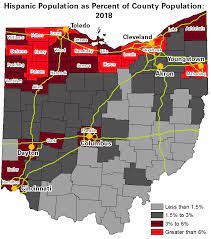April 14th Media Critique – Nina Anderson
https://www.theguardian.com/us-news/2023/apr/12/afghan-asylum-seekers-mexico-us-border
The article I chose is called ‘All the doors are closed to Afghans’: from fall of Kabul to limbo in Mexico by James Frederick. It focuses on Afghan immigrants who flee dangerous conditions in their home country by traveling to Mexico with the intention of eventually moving north to the US. Unfortunately, hundreds of thousands of Afghan, Congolese, Russian, and Jamaicans are trapped in Mexico with no clear path to further immigration. A case study in this article is that of Wali Modaqiq, a 54 year old Afghani environmental activist who fled the Taliban and is now stranded in Mexico City with his family.
The central message of this article is to highlight an underrepresented part of Mexican immigration. However, this article does also raise the question of bias at the border in terms of asylum. Ukrainian refugees for example are supposedly subject to far less scrutiny than the Afghani ones, is this based on race? Islamophobia? Differences in press coverage? The article does not answer these questions but it does invite the reader to think about possible reasons why hard working professionals like Madoqiq who fled the Taliban are having so much trouble claiming asylum at the US border.
The quantitative data is sometimes uncited, and sometimes taken directly from US government institutions. There are quotes such as, “In 2022, 17,450 migrants coming from Africa or Asia were detained by Mexico’s National Immigration Institute (INM), compared with just 3,852 in 2021.” It is implied that these descriptive statistics are taken directly from INM datasets. There is a lot of quantitative data, but little analysis. For example, the article states that there are hundreds of thousands of Afghans in immigration limbo, but it does not tell where they got that number estimate, or the specific ramifications of that displacement.
The qualitative evidence comes mostly from the case study of Madoqiq. Through him, we see an example of what causes an Afghan family to immigrate, how their life is in Mexico City, and what their plans are for the future. He is just one representative of an enormous population, but he describes his frustration with the system of asylum, and how his children are being isolated from their culture while stranded in Mexico city. We can assume that many refugees feel similarly and face similar struggles.
This class has focused a lot on Latino immigration through the southern US border, and I thought it was really interesting to find a source about a different group of people who are also facing difficulty with asylum claims. I was personally unaware that Afghan refugees attempted to cross through Mexico and this article made me think about the possible racist or islamophobic intentionality behind their treatment by the US immigration services. While the journalist could probably benefit from more citations and analysis of his data, I think this was a worthwhile and interesting read.
